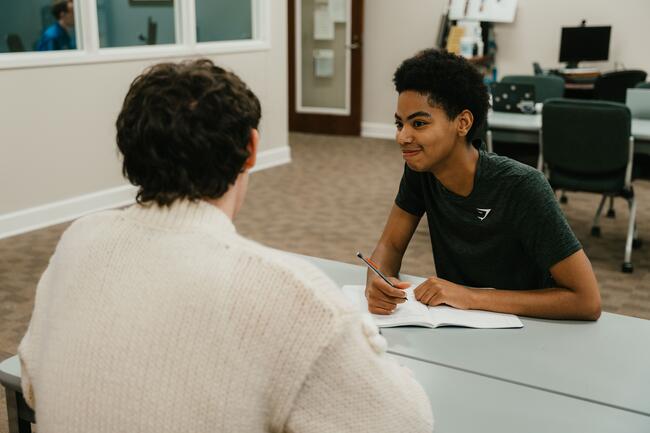You have /5 articles left.
Sign up for a free account or log in.

Corequisite classes at Middle Georgia State University have helped improve student pass rates, as well as facilitate departmental collaboration for student support.
Middle Georgia State University
Corequisite educational models are tied to higher pass and completion rates for students compared to remedial education, but ensuring learners are passing college-level courses often requires additional institutional investment.
Middle Georgia State University reimagined its corequisite education model to embed tutors, peer mentors and success coaches in entry-level math courses. Now, students who are falling behind are identified on a weekly basis, allowing for targeted and individualized outreach.
After the first term of the initiative, passing rates grew over 10 percentage points and withdrawals decreased, encouraging the university to scale the intervention to English courses and, starting next fall, STEM courses with high failure—D or F—or withdrawal rates.
What’s the need: Middle Georgia State offers 29 sections of its corequisite math course, Qualitative Reasoning. The course has seen stagnant success rates over the past few years, even though the number of students enrolled in corequisites grew, said Deepa Arora, senior associate provost of student success at Middle Georgia State.
Students who didn’t pass the class were less likely to stay enrolled and progress, prompting institutional leaders to consider new ways to engage these learners.
How it works: The solution was to create a support network of professionals who assist learners.
Faculty members are at the center of the initiative, flagging at-risk learners who are missing goals or failing to submit work.
From there, student success coaches, who are embedded in the course’s learning management system, reach out to those students to share resources, create a success plan and make referrals. Coaches also initiate a follow-up a week later to see if students have completed any action.
Depending on the student’s area of weakness, success coaches funnel them to one of two types of student employee: an embedded tutor or a peer mentor.
Embedded tutors address primarily academic concerns, such as low grades. Tutors attend class sessions, provide content-specific coaching and host review sessions as well as set up appointments for learners who need additional assistance, Arora said.
Corequisite learners who may be missing or not participating in classes are referred to a peer mentor, Arora said. In addition to teaching academic skills, peer mentors focus on a student’s sense of belonging and connection to the institution. They facilitate workshops, provide referrals to other support resources and connect students with classmates.
Both tutors and mentors are paid positions for which students must meet certain qualifications: They need to have passed the relevant course, be enrolled at least part-time and fulfill role-specific training.
Building better: The staffing changes were supported by revenue from tuition increases over the past two years. Faculty buy-in was also essential. “Faculty collaboration and cooperation with the success team was an integral part of the initiative and led to the development of a support ecosystem for the student,” Arora said.
Prior to implementing the new model, faculty members were briefed on the initiative’s design and asked to provide feedback and meet with the success coaches to build relationships.
Faculty didn’t receive any specific training other than guidance on how to identify at-risk students—those missing classes, earning low grades or failing to engage. Campus leaders also encouraged professors to send weekly communication regarding student performance and share related information about content with the success coach assigned to their section, Arora said.
The impact: The initiative succeeded in its goal of improving student pass rates: 73 percent of students who attempted the course in fall 2024 passed, a 14-percentage-point increase from the previous fall’s rate. (Excluding withdrawals, 77 percent of fall 2024 students passed the course.)
One trend the university noted was that the students who did fail were primarily in the online sections, suggesting that improvements to the in-person experiences were moving the needle.
Additionally, the connection between faculty and success coaches broke down institutional silos through ensuring timely identification of barriers and sharing of best practices. Success coaches appreciated being embedded in the learning management system, as it gave them greater insight into where the students needed help.
Support staff also noted increased student use of resources.
What’s next: After the initial positive results, university leaders chose to extend the initiative this term to include all sections of Composition I and its corequisite support courses. “The plan is also to extend this strategy to all sections of Anatomy and Physiology I and II where additional support is needed to improve their success rates,” Arora said.
The university will also invest in additional focus on online courses to close success gaps there.
Do you have an academic intervention that might help others improve student success? Tell us about it.




